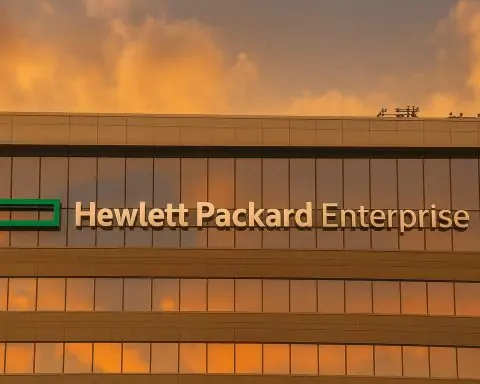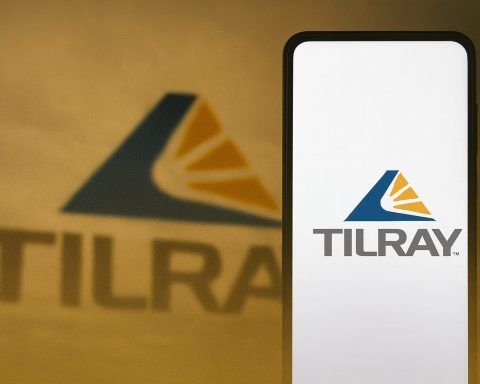- Strong Q3 results: WFC reported $5.59 billion net income for Q3 (Sept. 30), or $1.66 per share, beating the $1.55 consensus [1]. The bank raised its medium-term return-on-equity target to 17–18% (from ~15%) after the Fed removed Wells Fargo’s asset cap [2].
- Regulatory relief: In June, the Federal Reserve lifted the seven-year $1.95 trillion asset cap imposed after the fake-accounts scandal [3], enabling CEO Charlie Scharf’s growth plans. Wells Fargo has since closed 13 consent orders (out of 14), leaving only one old order still active [4].
- Stock rally: WFC shares have climbed about 12% year-to-date [5]. The stock jumped roughly 2% on the Q3 news, near 52-week highs [6]. Wells Fargo also raised its dividend and repurchased $6.1 billion of stock in Q3 [7].
- Fee income boom: Investment banking and other fees surged. Q3 non-interest fee revenue reached $840 million (up 25% YoY) [8]. Notably, Wells Fargo advised on major deals – Union Pacific’s $85 billion takeover of Norfolk Southern and Sycamore’s $23.7 billion buyout of Walgreens [9] – boosting its dealmaking franchise.
- Governance and leadership: In July, the board announced CEO Charlie Scharf would also become board chairman (with a new lead director) [10]. Shareholder activists have renewed calls to restore an independent chair [11] [12], reigniting a governance debate as the bank pushes forward.
- Growth initiatives: With the cap lifted, Wells Fargo is aggressively expanding consumer and small-business banking. It has launched new digital tools (e.g. online account-opening apps) and products (like a cash-back business credit card) to deepen customer relationships [13] [14]. Scharf says Wells is spending “significantly more” on marketing than in prior years [15] to fuel growth.
Record Q3 Earnings and Guidance
Wells Fargo’s third-quarter results, released Oct. 14, topped forecasts and energized its outlook. The bank reported $5.59 billion net income (versus $5.11 billion a year ago) on revenue of about $21.4 billion [16]. Earnings per share of $1.66 handily beat analysts’ $1.53 forecast [17]. CEO Charlie Scharf highlighted that Wells saw the highest quarterly loan growth in over three years, saying “we grew our balance sheet… Credit performance was strong” [18]. With strong results, Wells raised its target for return on tangible common equity (ROTCE) to 17–18%, up from a previous ~15% goal [19] [20].
The bank’s profitability benefited from higher net interest income (thanks to its large loan book amid still-high rates) and a surge in fee income. Net interest income was near $12 billion, while non-interest income (from fees, trading, etc.) grew 25% year-over-year [21]. In particular, investment banking fees jumped to roughly $840 million in Q3 [22]. Analysts noted that rising deal activity helped: globally M&A has rebounded (U.S. deal volume +33% YTD), and Wells Fargo tapped into this by advising on blockbuster transactions [23]. For example, it led financing for Union Pacific’s $85 billion merger with Norfolk Southern and Sycamore Partners’ $23.7 billion take-private of Walgreens [24].
Market Reaction and Stock Performance
Investors cheered the quarterly beat. In early trading on Oct. 14, Wells Fargo’s stock climbed about 1–3% on the news [25]. The shares are near 52-week highs (around the high $70s per share) and have gained roughly 12% year-to-date [26], outperforming many bank peers. Over the past 12 months WFC is up about 34%, rebounding strongly from spring lows [27]. Trading volume has picked up as the bank’s outlook brightened, with analysts raising price targets (the consensus moderate-buy target is ~$78–84) [28].
Meanwhile, Wells Fargo is returning cash to shareholders. It boosted its dividend by 12.5% in Q3 and authorized $6.1 billion in share repurchases [29]. TS2.Tech notes the current dividend yield is about 2% (with a payout ratio near 30%) [30], making Wells attractive for income investors. Overall, Wall Street sentiment is cautiously optimistic: about 16 analysts rate WFC a buy versus 7 hold [31], implying modest upside in the stock after its rally.
Growth Strategy and Consumer Initiatives
Now that the Fed has lifted the asset cap, Wells Fargo is pivoting back to growth. Management says it will deploy that relief into higher lending and hiring [32]. A recent focus is on the bank’s consumer and small-business segments. Banking Dive reports that Wells has overhauled its digital and marketing efforts for small businesses: it rolled out a new digital deposit application in January, added online account-opening tools (including a line-of-credit application) this year, and recently launched new cards (e.g. a cash-back business credit card) to meet customer needs [33] [34]. Head of Small/Business Banking April Schneider said that with the cap gone, her unit is “one of the top priority rails” for growth [35].
On the consumer side, Wells Fargo maintains one of the largest branch networks and a market-leading mortgage platform, assets that analysts say give it scale. TS2.Tech notes that Wells’ vast branch footprint and mortgage business are significant strengths as the bank rebuilds [36]. The bank is also ramping marketing after years of restraint. CEO Scharf confirmed that Wells Fargo is spending “significantly more” on advertising than in the recent past, restarting promotions and advertising campaigns to attract customers [37]. In fact, the bank’s annual ad spend jumped 72% from 2022 to 2024, and it expects to continue investing in marketing to amplify its growth initiatives [38]. Analysts view these moves – digital tools, new products, higher marketing – as positive steps to win back customers and deposits.
Regulatory and Legal Update
Wells Fargo’s regulatory overhang is easing. The big development was the Fed’s June decision to lift the $1.95 trillion asset cap that had been capping its balance sheet since 2018 [39]. Fed Chair Powell noted the bank had satisfied conditions in its improvement plans, enabling this removal. The cap’s end means Wells Fargo can now grow loans and deposits with no Fed-imposed limit.
On the enforcement front, the bank has effectively resolved most consent orders stemming from past compliance issues. Management disclosed that it closed seven separate regulatory orders in 2025 (13 total since 2019), with only a single 2018 order still active [40]. (Earlier in 2025 the CFPB lifted another consent decree [41].) Compliance analysts say this forward progress is a “good sign” that Wells Fargo has largely cleaned up the risk controls that trapped it for years [42] [43]. The OCC and CFPB have both signaled confidence in Wells’ compliance programs, removing oversight restrictions one by one [44].
Still, regulators remain watchful. In May, Moody’s downgraded WFC’s long-term debt to Aa2 (reflecting the U.S. sovereign downgrade) [45]. The bank is also emerging from recent litigation: in January 2025 the OCC imposed hefty fines on former managers from the fake-accounts era [46], and Wells paid a $3 billion settlement in 2020 over related claims. While the legacy issues are winding down, any new compliance slip-ups could hurt Wells Fargo’s renewed momentum, analysts caution [47].
Leadership and Governance
Wells Fargo’s leadership structure has been in flux. In late July the board announced CEO Charlie Scharf would add the chairman title and receive a one-time $30 million equity award to retain him [48]. The board plans to appoint an independent lead director once Scharf assumes the dual role [49]. Proxy advisers have noted that this reverses the bank’s 2016 split of CEO and chair roles after the scandal. Many institutional investors and advisory groups have urged Wells Fargo to keep those roles separate to strengthen governance.
Indeed, a shareholder rights group (the Accountability Board) has reignited this debate. In early October it filed a proposal asking Wells Fargo to reinstate a separate, independent board chair [50] [51]. Simply Wall St and TS2.Tech report that activists see this as a material governance issue, even as the bank focuses on growth [52] [53]. Bank insiders note the plan for a lead director may ease some concerns, but the row over CEO duality is likely to draw attention at the annual meeting. Beyond governance, Scharf’s team has filled key roles: Barry Sommers (ex-JPMorgan) was hired to run Wealth Management, and other divisional heads have been reshuffled under the new five-segment model. No other major leadership changes have been announced this quarter.
Analyst and Expert Views
Experts say Wells Fargo’s current narrative is largely positive. Market strategists highlight that the bank benefits from both capital-markets and retail strengths. Morgan Stanley analyst Ebrahim Poonawala notes that Wells Fargo’s combined investment banking and wealth-management platforms create a “competitive advantage” by tapping multiple revenue streams [54]. UBS and Piper Sandler analysts similarly point out that Wells’ franchise (especially its huge retail deposit base and mortgage business) positions it well to capture growth once relief came [55] [56].
That said, strategists emphasize the macro outlook. BCA Research’s Irene Tunkel says bank results serve as a “window into the economy,” noting that if loan demand and consumer spending do hold up, it would argue against a recession [57]. On the flip side, Gabelli analyst Dan Sykes warns investors will be “looking for any changes in the credit environment… one way or another” [58]. In short, analysts are watching for signs of credit stress or slower loan growth that could dent Wells Fargo’s outlook.
Most analysts maintain a constructive stance. The consensus rating on WFC is a “moderate buy,” with roughly 60% of surveyed analysts bullish [59]. Price targets cluster in the mid-$80s to low-$90s, implying modest upside from current levels. The main concerns flagged by strategists are: sustaining net interest margins if rates fall (the Fed cut rates in September), and keeping a lid on expenses [60]. But overall, experts agree that Wells Fargo’s recent earnings beat and the lifting of regulatory constraints have set the stage for a stronger 2026 – provided economic conditions remain stable.
Sources: Recent news releases and analyses from Reuters [61] [62] [63], TS2.Tech [64] [65], Banking Dive [66] [67], Investing.com [68] [69] and other financial media were used to compile this report. This article incorporates direct quotes and data from these outlets.
References
1. www.reuters.com, 2. www.reuters.com, 3. www.reuters.com, 4. www.reuters.com, 5. www.reuters.com, 6. www.reuters.com, 7. au.investing.com, 8. www.reuters.com, 9. www.reuters.com, 10. www.reuters.com, 11. ts2.tech, 12. ts2.tech, 13. www.bankingdive.com, 14. www.bankingdive.com, 15. www.bankingdive.com, 16. www.reuters.com, 17. www.reuters.com, 18. www.reuters.com, 19. www.reuters.com, 20. www.reuters.com, 21. www.reuters.com, 22. www.reuters.com, 23. www.reuters.com, 24. www.reuters.com, 25. www.reuters.com, 26. www.reuters.com, 27. ts2.tech, 28. ts2.tech, 29. au.investing.com, 30. ts2.tech, 31. ts2.tech, 32. ts2.tech, 33. www.bankingdive.com, 34. www.bankingdive.com, 35. www.bankingdive.com, 36. ts2.tech, 37. www.bankingdive.com, 38. www.bankingdive.com, 39. www.reuters.com, 40. www.reuters.com, 41. www.reuters.com, 42. www.reuters.com, 43. www.reuters.com, 44. www.reuters.com, 45. ts2.tech, 46. www.reuters.com, 47. ts2.tech, 48. www.reuters.com, 49. www.reuters.com, 50. ts2.tech, 51. ts2.tech, 52. ts2.tech, 53. ts2.tech, 54. ts2.tech, 55. www.reuters.com, 56. ts2.tech, 57. ts2.tech, 58. ts2.tech, 59. ts2.tech, 60. ts2.tech, 61. www.reuters.com, 62. www.reuters.com, 63. www.reuters.com, 64. ts2.tech, 65. www.reuters.com, 66. www.bankingdive.com, 67. www.bankingdive.com, 68. au.investing.com, 69. au.investing.com







